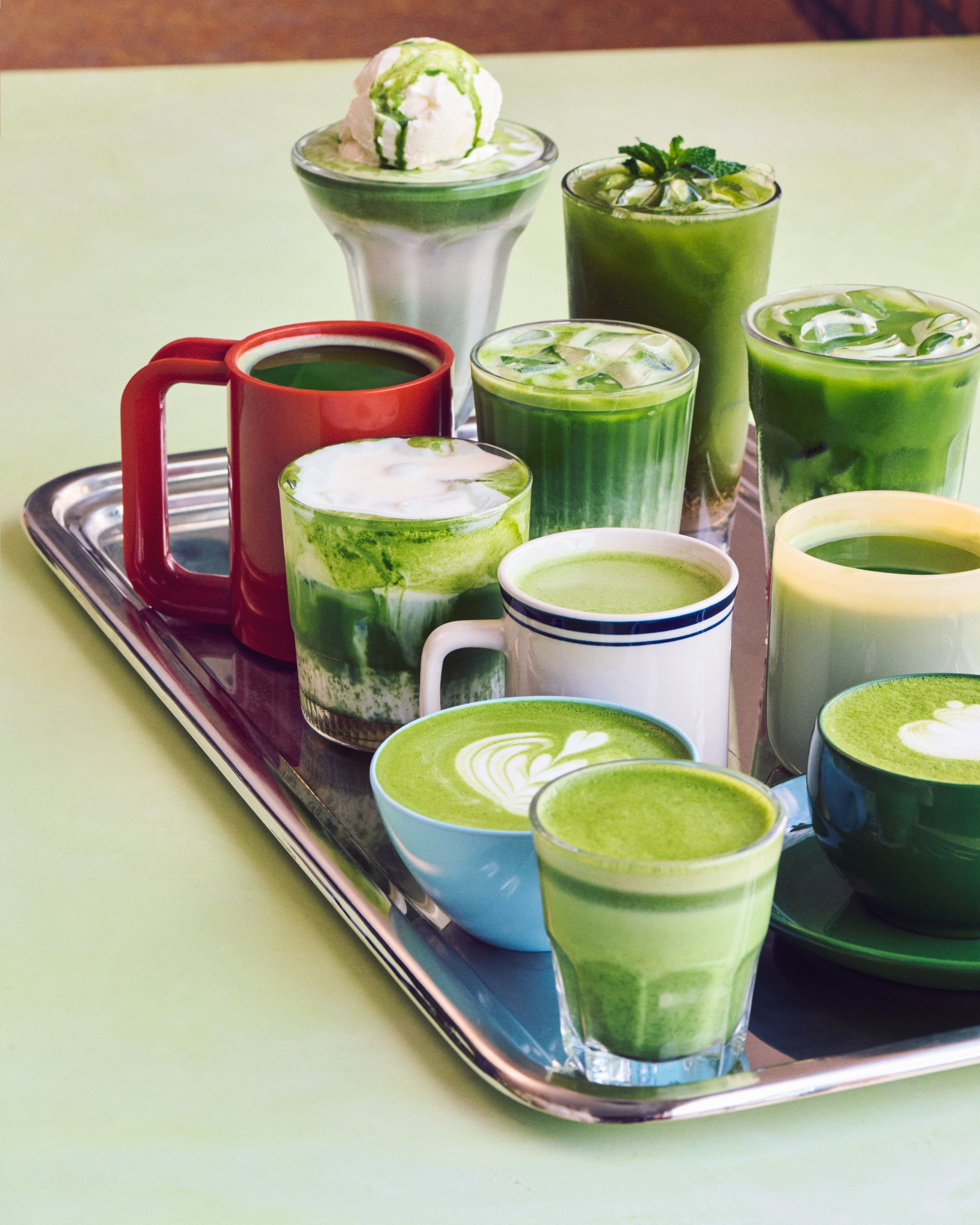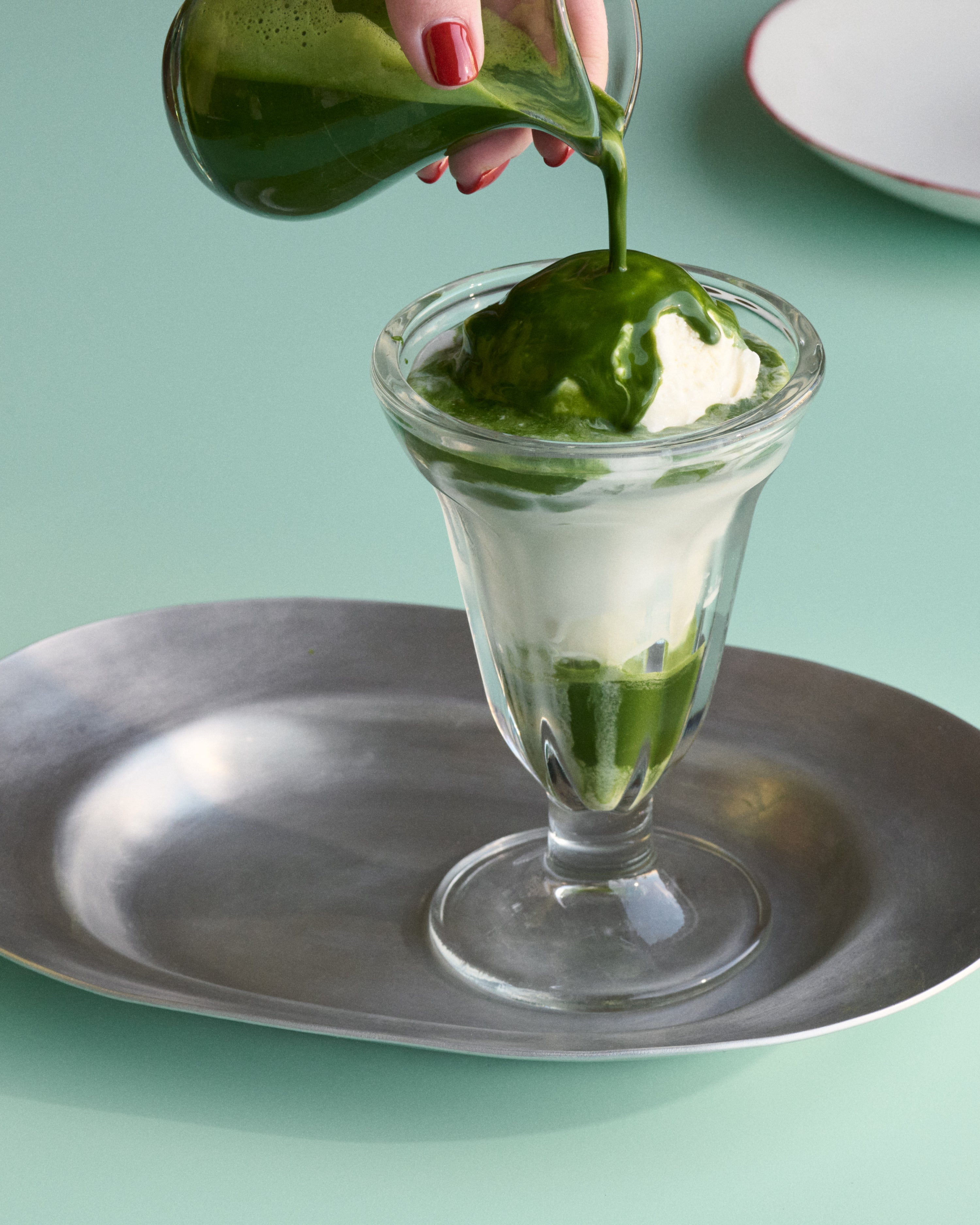Frequently Asked Questions
What is “ceremonial grade” matcha and why isn’t your matcha labeled as such?
Great question! While all of our matcha is from Japan, we don’t use the term “ceremonial grade” because, truthfully, that phrase is a bit of a myth. We don’t and will never sell any low-grade matcha, but since there’s no official system in Japan or the US that defines or regulates what “ceremonial” matcha means, we choose not to label ours as such.
The phrase “ceremonial grade” started appearing in the West as a way to distinguish higher-quality “drinking” matcha from lower-quality matcha meant for baking or sweets. While that delineation may have made sense early on, it’s become confusing, and even misleading, over time:
- It’s not regulated. Anyone can label a package as “ceremonial grade” – even if it's made from lower-quality or non-matcha green tea powders. We’ve seen everything from vibrant, high-grade matcha to yellowed, baking-quality powders labeled “ceremonial.”
- It’s not an official categorization. In Japan, there is no such categorization as “ceremonial grade,” and even here in the US, there is no standardized definition.
If we wanted to take this literally, “ceremonial” simply means matcha chosen for use in a Japanese Tea Ceremony. By that definition, any matcha used in a ceremony could be considered ceremonial, while, by contrast, any matcha not used in a ceremony would not be “ceremonial.” For the majority of our customers, the focus isn’t on hosting or participating in a tea ceremony (though they should definitely seek it out, as it’s a beautiful, time-honored practice) – it’s about enjoying high-quality, authentic matcha at home, whether pure or in a latte. That’s what we strive to provide.
If you are looking for matcha specifically for a tea ceremony, we’d point you toward our highest-quality offerings, like those in our Rare collection.
What is matcha?
One could say that matcha is powdered green tea, which in turn is the dried leaves of the Camellia sinensis plant. While this is technically true, not all powdered green tea is matcha – it doesn't represent the whole picture. Matcha must go through specific growing and processing steps to first be called tencha, before being ground into authentic matcha.
To better understand this, let’s follow the steps of making matcha.
Growing: Japan is the only place authentic matcha comes from, and is home to several historic tea-growing regions, each with deep cultural roots and centuries of tradition. Thanks to its volcanic soil, misty ocean breezes, and rolling hillsides with excellent drainage, much of Japan’s climate is perfect for tea, making it the 11th largest producer in the world. In places like Uji and the expanded region around it, farmers have been cultivating the same plants for generations, passing down not just land, but a true heritage of tea.
The journey to matcha begins each spring. Farmers shade their tea plants for 3 to 5 weeks, using tarps or traditional huts to block sunlight. With less light, the plants work harder, pulling up nutrients from the soil; without sunlight, photosynthesis is slowed, which preserves and increases L-theanine content (which adds sweetness and calm) and delays the conversion to catechins (the compounds that create bitterness). The result is the hallmark of great matcha: a rich, savory umami balanced with smooth, earthy sweetness.
Harvest & Processing: In Japan, the vast majority of tea is harvested mechanically. Labor is expensive, and hand-plucking is reserved only for the absolutely best quality teas. Once the tea leaves are harvested, they head straight to the factory, where they are steamed for about 20 seconds. This brief step locks in their bright green color, preserves freshness, and softens the leaves so they are easier to process later.
After steaming, the leaves are cooled and dried by being lifted through tall columns of air — a clever way to separate any that have stuck together while also gently removing moisture. From there, they move into a special brick oven that very carefully dries the leaves evenly.
The result is tencha — the unground precursor to matcha. Once cooled, the leaves are cut, filtered to remove stems and veins, and given a final gentle drying. At this point, the tencha is ready to be blended and stored until it is ground into matcha.
Blending & Grinding: Most of the time, farmers do not finish the complete matcha processing themselves, but instead sell their leaves to other vendors and blenders, who step in to craft the final product. These vendors can oversee the final steps of cutting, filtering, and drying to make sure the tencha is ready for milling. Some farmers have long-standing relationships with the same blenders year-over-year, while the rest sell their tea in auctions.
What may not be intuitive is that nearly all matcha is blended – single cultivar matcha is not very sought after. Traditionally, the craft of the tea master was on display in the blending, in the selecting, and final composition of the tencha before grinding into matcha. They select for fragrance, flavor, and color to create the right balance. And once blended, the tencha is stored, awaiting grinding into matcha when it is ordered.
High-quality matcha is traditionally stone-ground, a slow and high-maintenance process. Modern stainless steel grinding machines offer a faster, more efficient alternative to meet demand, often without sacrificing quality.
See also: Our Approach. How to Make Matcha.
Why is only some of your matcha organic?
The answer is a little complex, and it starts with how “organic” matcha is viewed in Japan. While the organic label is becoming more recognized, it has never been a major priority there. Tea farming is considered a staple of Japanese agriculture, and tea producers typically maintain incredibly high standards with limited tolerance for synthetic pesticides — regardless of any certification. All of the producers we work with at Café Matcha follow these high-quality practices.
Flavor also plays a big role. Organic matcha has often lagged behind classic matcha in flavor, since the lack of fertilizer in the soil can make it harder to achieve the rich umami depth that’s prized in Japanese tea. This isn’t always the case, and we love our organic options, but it’s true for many options on the market.
Finally, certification itself is costly to obtain and maintain. Because most matcha producers primarily sell to the Japanese market—where conventional matcha is generally preferred—there hasn’t been enough demand to pursue organic certification. Historically, certifications have mainly been pursued by larger (and better capitalized), factory-scale producers who can afford the expense.
Do I have to sift my matcha?
We always recommend it for smooth, clump-free matcha. There is a misconception that higher-quality matcha doesn’t need to be sifted; however, this is not true. All kinds of factors can affect the clumpiness of matcha, including grind type, static, humidity, and moisture, how it’s packaged, how old it is, whether it has already been opened, etc.
How should I store my matcha? Should I empty it into the tin?
Matcha, like all good tea, should be kept away from three main things: oxygen, light, and moisture. Our tins are crafted to be displayed beautifully on a tea shelf, but are not designed to be 100% air-tight, so we recommend keeping our matcha in the foil pouches it comes in, within the tin, re-sealing the pouches as needed when in use. We also sell a limited variety of tea canisters for more air-tight storage.
You can also store unopened matcha in the fridge or freezer to keep it optimally fresh! But we only recommend this if it is unopened; otherwise, moisture can condense in the bag and lead to spoilage.
How long is matcha good for? What’s the shelf life?
Matcha, as long as it’s unopened, is typically good for one year, if not longer (depending on storage techniques). Once opened, if stored properly, it is suitable for approximately three months. Matcha will never go rancid (unless stored improperly), but starts to perceptibly lose its lustre and flavor after six months. If stored improperly, it can have an even shorter shelf life than that.


